| Femmes Fatales | Feb 20 2022 |

Live, survive, thrive—she covered the entire spectrum.
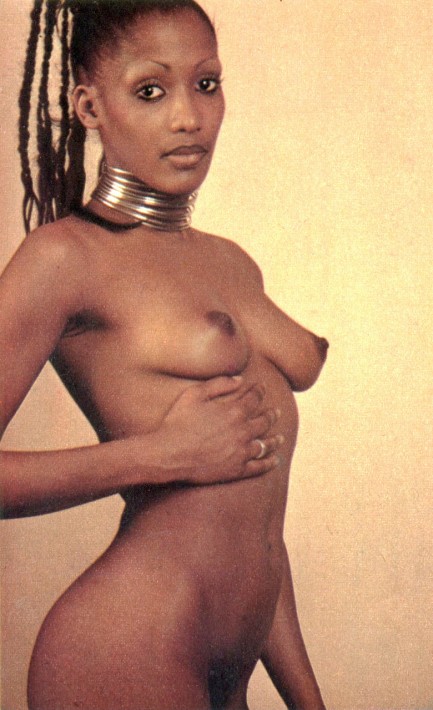
Above is a lovely image of a person we guarantee you'll find very interesting. Her name is often given as Elizabeth Bagaaya, or Elizabeth Bagaya, but she's also known as Princess Elizabeth of Toro, and she's a Ugandan lawyer, diplomat, politician, and model—not in that order. Let's see if we can get her incredibly wild life story straight. First of all, Bagaaya was a princess because her mother was married to the King of Toro, an ancient kingdom that spanned not only Uganda, but parts of present-day Burundi, Rwanda, Tanzania, and Zaire. Next she was a brilliant student, the first black woman to win admission to the English Bar Association, and, in 1965, Uganda's first female lawyer. In 1967 the Ugandan government under Milton Obote abolished the monarchy and Bagaaya lost her title and became merely a person from a powerful family.
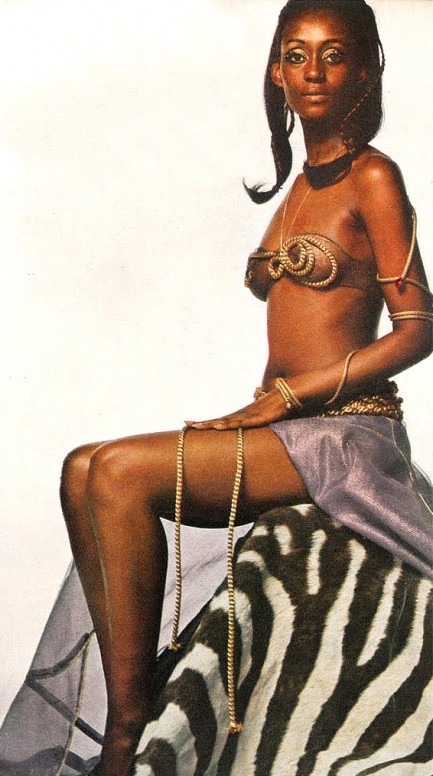 In 1971 Idi Amin overthrew Obote and installed himself as dictator. Taking notice of Bagaaya, who in addition to her legal background had been modeling for a few years, he appointed her Minister of Foreign Affairs. He had an ulterior motive. He wanted her to become one of his wives. Her answer—a hard no.
In 1971 Idi Amin overthrew Obote and installed himself as dictator. Taking notice of Bagaaya, who in addition to her legal background had been modeling for a few years, he appointed her Minister of Foreign Affairs. He had an ulterior motive. He wanted her to become one of his wives. Her answer—a hard no.Amin was displeased by her reticence, and placed her under house arrest. He allegedly had her hair forcibly shaved, and generally made her existence hell, all of which prompted her to escape to Nigeria.
Just as an aside—Amin killed up to 300,000 people, maybe even more, but to get a sense of how dangerous he was in his personal life, consider the fact that his second wife, Kay, died under unknown circumstances and her body turned up dismembered, and his fifth wife, Sarah, had a previous boyfriend who vanished and is thought to have been beheaded. Amin wanted Bagaaya, but she was in no way safe because of that.
Anyway, moving on, some of Bagaaya's doings overlap, but the bulk of her modeling came after fleeing from Amin, and when she undertook that profession she gave it her all, becoming the first black woman to have a spread in Vogue, and the first to appear on the cover of Harper's Bazaar. As it was a chic thing for models to do at the time, she posed nude, with the results you see. She also acted, appearing in the films Things Fall Apart and Sheena—yeah, the one with Tanya Roberts.
In 1979 she returned to Uganda because Amin was gone, and the country was having elections. She helped former president Obote win, later served as Uganda's ambassador to Germany and the Vatican, and was Uganda's High Commissioner to Nigeria. There's more, but why go on? What we've described, ladies and gentlemen, is called a life, one that is ongoing, as Princess Elizabeth remains an important figure, aunt of the current King of Toro, and an outsize and complex personality.
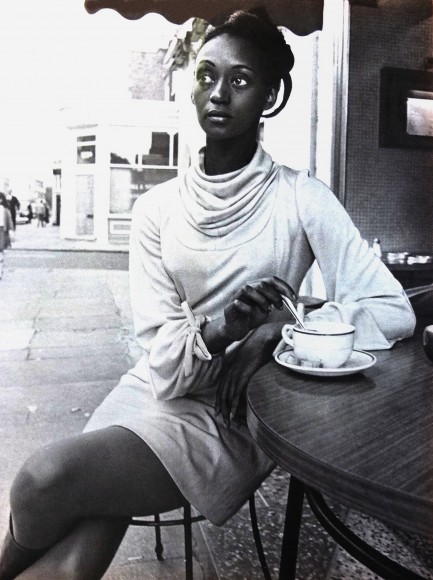
| Femmes Fatales | Jan 16 2016 |

She's worth her weight in any substance you choose.


Above, French actress Clio Goldsmith, photographed in 1975 for Vogue in an unidentified jungle, but most likely in Brazil, a suspicion that arises purely from the fact that Vogue had a well established Brazilian imprint. Goldsmith's film career lasted a mere six years, including 1982's hit sex comedy Le cadeau, aka The Gift, but she's still remembered as one of France's most beautiful cinematic exports.
| Femmes Fatales | Dec 12 2015 |

Some accessories—and some people—never go out of style.
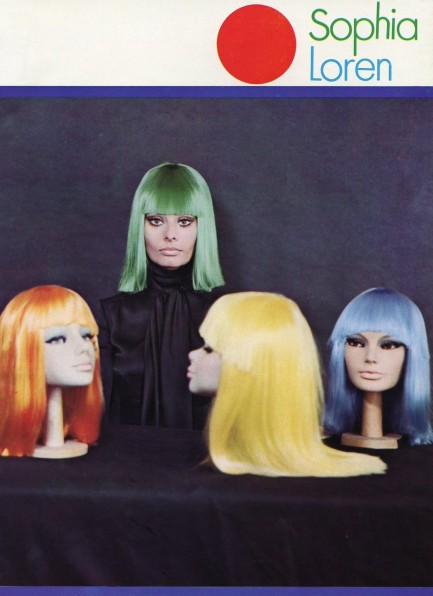
This extremely rare Sophia Loren item comes from Japan and appeared in magazines and promo pamphlets, but the actual photo was originally shot in Italy in 1970 by Tazio Secchiaroli for Vogue. Ironically, Loren is known today for wearing wigs, but not in a good way—the now eighty-one-year-old star usually sports big red hair in public but vicious internet snarks joke that it isn't real. Perhaps not, but were any of her detractors ever this perfect? We doubt it. We think Loren should turn the jokes around and make her next appearance in one of the wigs above.
| Femmes Fatales | Sep 13 2013 |

Perfectly dressed for both the season ending and the season coming.
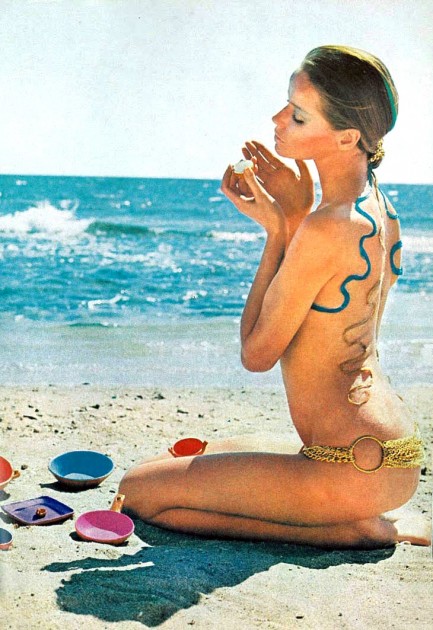
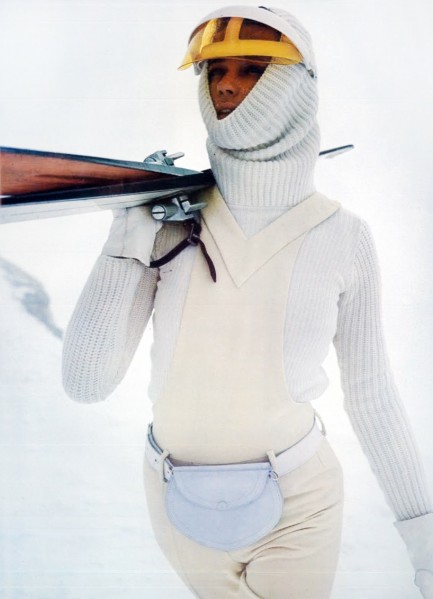
Veruschka von Lehndorff, aka Vera Gräfin von Lehndorff-Steinort was born in Königsberg, East Prussia, a place that is now part of Russia and called Kalingrad. Today she’s a countess of Lehndorff-Steinort, which was once part of Germany but is now inside Poland. When she gained fame as a model in the 1960s she became known merely as Veruschka. She once shot an iconic set of photos in Salvador de Bahia, Brazil, and once posed for Salvador Dali. She was six feet tall and could fold herself like a pretzel so that her ankles were behind her head. She branched out from modeling and acted in a dozen films, including Michelangelo Antonioni’s 1966 classic Blow Up, and 2006’s Bond reboot Casino Royale. She is a woman with range, and so we’ve selected two photos to exemplify that—shots from Vogue magazine that show her in both a summer and winter milieu. These are from 1968.
| Femmes Fatales | Apr 5 2011 |

Actually, striking is just the word for it.
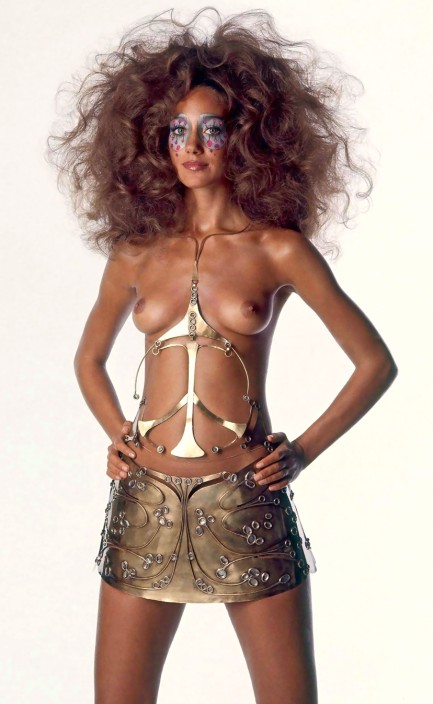
Above, a striking shot of American actress and model Marisa Berenson wearing impractical and potentially lightning attracting metal clothing by Oscar Gustin. The photo was originally published in Vogue in December 1969.




































































